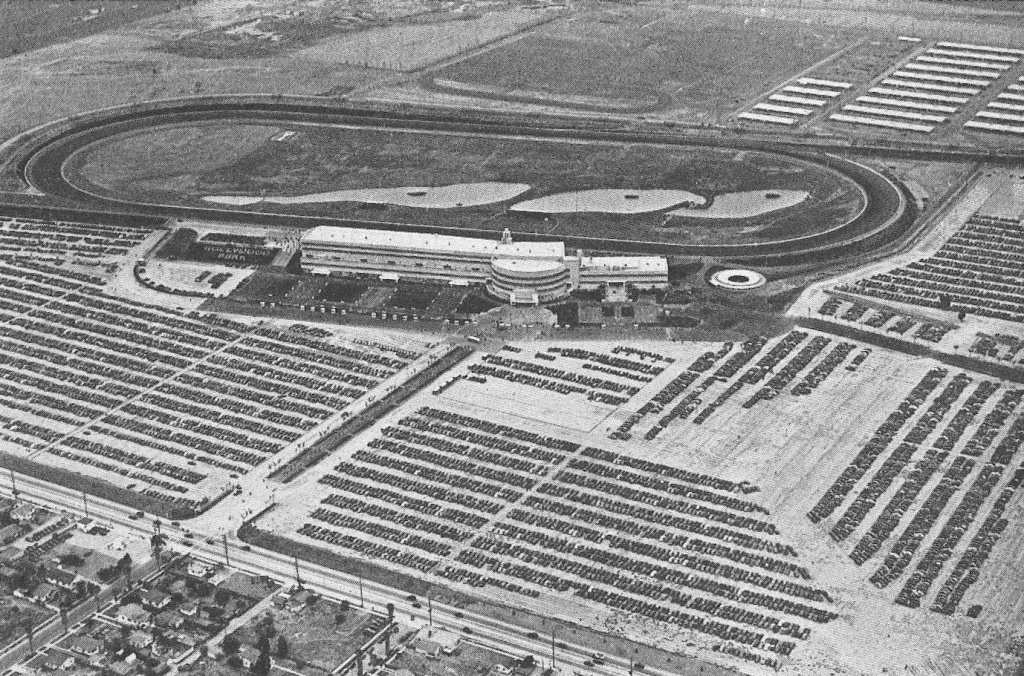
Hollywood Park Racetrack is gone. In its place is SoFi Stadium, the 77,000-seat home of Los Angeles’ two pro football teams and much else, including the 6,000-seat YouTube Theater. There’s also more to come in the surrounding vastness of Hollywood Park, named after the racetrack. Wikipedia says the park—
consists of over 8.5 million square feet (790,000 m2) that will be used for office space and condominiums, a 12-screen Cinepolis movie theater, ballrooms, outdoor spaces for community programming, retail, a fitness center, a luxury hotel, a brewery, up-scale restaurants and an open-air shopping and entertainment complex.
The picture above (via this Martin Turnbull story) is an aerial view of the racetrack in 1938, shortly after it opened. Note the parking lot: immense and almost completely filled with cars. Perhaps this was the day Seabiscuit won his inaugural Gold Cup. Whether or not, few alive today remember when only baseball was more popular than horse racing in the U.S.
What interests me about this change is that I’ve enjoyed a bird’s-eye view of it, while approaching Los Angeles International Airport on commercial passenger planes. I’ve also photographed that change over the course of seventeen years, through those same windows. Between 2005 and 2022, I shot many dozens of photos of the racetrack site (along with the adjacent Hollywood Park Casino) from its last working days as a racetrack to the completion of SoFi Stadium (with the casino’s relocation to a corner of what had been the Racetrack’s parking lot).
In this album on Flickr are 91 photos of that change. Here I tell the story on one page. We’ll start in January 2005:
At this time the racetrack was long past its prime but still functioning along with the casino. (Look closely and you’ll see the word CASINO in red on the roof of the nearest grandstand. The casino itself is the gray building to its left.) In the distance, you can see the skyline of the West Wilshire region and the Hollywood Hills, topped by the HOLLYWOOD sign. (Hollywood Park is actually in Inglewood.)
This same year, Churchill Downs Incorporated sold the track to the Bay Meadows Land Company, owned by Stockbridge Capital Group, for $260 million in cash. This was good for the private capital business, but doom for the track. Bay Meadows, an equally famous racetrack just south of San Francisco, was also doomed.
This shot was taken seven months later, this time looking south:
Note the fountains in the ponds and the pavilion for members and special guests. Also, notice the separate grandstand for the Casino. The cars in the lots are almost certainly extras for LAX’s car rental companies, leasing unused parking spaces. But you can still see in the racetrack what (it says here) was “once described as too beautiful for words.”
The next photo is from April 2007:
Everything still appears operative. You can even see horses practicing on the dirt track. Also note The Forum across the street on the north side. Now the Kia Forum, its roof at various times also bore Great Western and Chase brand images. It was built in 1966 and is still going strong. During its prime, the Lakers in their Showtime era played there. (The team moved downtown to Staples Center in 1999.)
Next is this view, three months later in July 2007, looking south from the north side:
Note the stables between the racetrack and the practice track on the left. Also, note how the inner track, which had turned from dark brown to blue in prior photos, is now a light brown. It will later be green as well.
(Studying this a bit, I’ve learned that good horse race tracks are very deep flat-topped trenches filled with layers of special dirt that require constant grooming, much of which is devoted to making sure the surface is to some degree wet. In arid Los Angeles, this is a steep requirement. For more on how this works, this Wired story will help.)
Two months later, in September 2007, this view looking north takes in most of the Hollywood Park property, plus The Forum, Inglewood Cemetery, Baldwin Hills (beyond the cemetery and to the left or west):

The Hollywood Hills, with its white sign, is below the clouds, in the top middle, and the downtown Los Angeles skyline is in the top right.
Here on the Hollywood Park property, the casino will be rebuilt on the near edge of the property, along South Stadium Drive.
Here, a few months later, in February 2008, the inner track is once again blue:
This time take note of the empty areas of the parking lot, and how some regions are partitioned off. Ahead we’ll see these spaces variously occupied.
A few seconds after the shot above, I took this shot of the casino and club grounds:
The next shot comes a year and a half later, in September 2009:
Here the inner track has returned to green grass. In the far corner of the parking lot, across from The Forum, a partitioned section has activity involving at least six tents, plus other structures.
Almost three years passed before I got another view, in May 2102, this time looking south from the north side:
Here we get a nice view of the stables and the practice track. On the far side of both is a shopping center anchored by Home Depot and Target. (The white roofs are left and right.) Look in the coming shots at how those will change. Also, note the keystone-shaped fencing inside the practice track.
Here is the same scene one month later, in June 2012:
The keystone shape in the practice track is oddly green now, watered while the rest of the ground inside the track is not. A few seconds later I shot this:
Here the main change is the black-on-orange Belfair logo on the roof of the main grandstand. The paint job is new, but in fact, the racetrack became the Betfair Hollywood Park back in March, of this year.
In December begins California’s short rainy season, which we see here in my last view of the racetrack in 2012:
It’s a bit hard to see that the main track is the outer one in dark brown. We also see that the inner track, which had been blue and then green, is now brown: dirt instead of grass. This is my last view before the racetrack got its death sentence. Wikipedia:
On May 9, 2013 in a letter to employees, Hollywood Park president F. Jack Liebau announced that the track would be closing at the end of their fall racing season in 2013. In the letter, Liebau stated that the 260 acres on which the track sits “now simply has a higher and better use”, and that “in the absence of a favorable change in racing’s business model, the ultimate development of the Hollywood property was inevitable”. It was expected that the track would be demolished and replaced by housing units, park land and an entertainment complex, while the casino would be renovated.
My next pass over the property was on June 16, 2013:
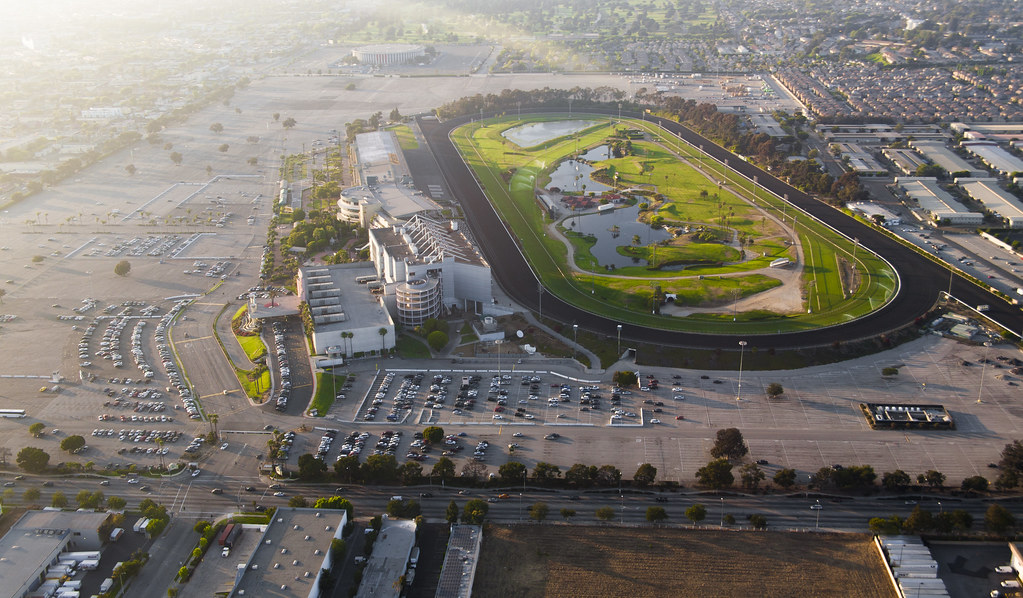 The racetrack here is still verdant and irrigated, as you can see from the sprays onto the inner track, which is grass again. The last race here would come six months later, and demolition would begin shortly after that.
The racetrack here is still verdant and irrigated, as you can see from the sprays onto the inner track, which is grass again. The last race here would come six months later, and demolition would begin shortly after that.
One year later, in June 2014, we can see the practice track and the stables absent of any use or care, condemned:
Farther west we see the casino is still operative, with cars in the parking lot:
Racing is done, but some of the ponds are still filled.
Three months later, in September 2014, demolition has begun:
Half the stables are gone, and the whole racetrack area has been bulldozed flat. Two things to note here. First is the row of red trees on the slope at the near end of the track. I believe these are red maples, which turn color in Fall even this far away from their native range. They were a nice touch. Second is the pond at the far end of the track. This is where they will start to dig a vast bowl—a crater—that will become the playing field inside the new SoFi Stadium.
Two months later, in November 2014, all the stables are completely gone, and there is a road across a dirt pile that bridges the old outer track:
This shot looks northeast toward the downtown Los Angeles skyline, and you can see the Hollywood sign on the dark ridge at the left edge of the frame, below a bit of the plane’s wing. The blur at the bottom, across the parking lot, is from the plane’s engine exhaust. (One reason I prefer my windows forward of the wing.)
This next shot is another two months later, in January 2015:
The casino is still happening, but the grandstand is ready for demolition and the racetrack area is getting prepared for SoFi.
One month after that, in February 2015, we see how winter rains have turned some untouched areas green:
Only two of the red trees remain (or so it appears), and the grandstands are still there, along with an operative casino.
This next shot is eight months later, in October, 2015:
Now the grandstand is gone. It was demolished in May. Here is a KNBC/4 report on that, with a video. And here is a longer hand-held amateur video that also gets the whole thing with stereo sound. New construction is also happening on the left, next to the old casino. This is for the new casino and its parking garage.
The next shot is almost a year later, in September, 2016:
It was a gloomy and overcast day, but you can see the biggest changes starting to take shape. The new casino and its parking garage are all but done, digging of the crater that will become the SoFi stadium has started, and landscaping is also starting to take shape, with hills of dirt in the middle of what had been the racetrack.
Ten months later, in July 2017, the SoFi crater is dug, structural pieces are starting to stand up, the new casino is operating and the old casino is gone:
Here is a close-up of work in and around the SoFi crater, shot a few seconds earlier:
The cranes in the pale gray area stand where a pond will go in. It will be called Rivers Lake.
This shot a few seconds later shows the whole west end of what will become the Hollywood Park complex:
The area in the foreground will become a retail center. The buildings on the left (west) side of the site are temporary ones for the construction project. On the right is the one completed permanent structure: the casino and its parking garage. Buildings on the left or west edge are temporary ones for the construction project.
Three months later, in January 2018, I flew over the site at night and got this one good shot (at 1/40th of a second moving at 200+mph):
Now they’re working day and night raising the SoFi structure in the crater. I share this to show how fast this work is going. You can see progress in this photo taken one month later, in February 2018, again at night:
More than a year went by before I passed over again. That was in August 2019. Here is my first shot on that pass:
Here you SoFi’s superstructure is mostly framed up, and some of the seating is put in place. Here is a wider view shot two seconds later, after I zoomed out a bit:
In both photos you see the word FORUM on The Forum’s roof. (It had previously said “Great Western” and “Chase.” It is now the Kia Forum.) You can also see the two ponds in full shape. The left one will be called Rivers Lake. The right one will pour into it over a waterfall. Cranes on the left stand in the outline of what will become an eight-story office building.
Three months later, in November 2019, the outside surfaces of the stadium are about halfway up:
We also see Rivers Lake lined, with its gray slopes and white bottom.
After this the Covid pandemic hit. I didn’t travel by air (or much at all) for almost two years, and most sporting events were canceled or delayed. So the next time I passed over the site in a position to shoot it was April 2022, when SoFi Stadium was fully operational, and the area around it mostly complete:
Here we see the shopping center in the foreground, now with the Target store showing its logo to the sky. The old practice track and stables have been replaced by parking. A few seconds later I zoomed in on the completed stadium:
We see Rivers Lake, the office building, and its parking structure are also done, as are the parking lots around the stadium. You can also see “SoFi Stadium” in raised lettering on the roof.
And that completes the series, for now.
There are a total of thirty-one photos above. All the links in the photos above will take you to a larger collection. Those in turn are a fraction among the hundreds I shot of the site. And those hundreds are among many thousands I’ve shot of ground and sky from passenger planes. So far I’ve posted over 42,000 photos tagged aerial or windowseat in my two Flickr accounts:
Hundreds of those photos have also found their ways into Wikipedia, because I license nearly all my photos online to encourage cost-free re-use. So, when people with an interest in a topic search for usable pictures they’d like to see in Wikipedia, they often find some of mine and park them at Wikimedia Commons, which is Wikipedia’s library of available images. Of the hundreds you’ll find there in a search for “aerial” plus my name, one is the top photo in the Wikipedia article on Hollywood Park Racetrack. I didn’t put it there or in Wikimedia Commons. Randos did.
My purpose in putting up this post is to encourage documentation of many things: infrastructure changes, geological formations, and any other subject that tends to get overlooked. In other words, to be useful.
A friend yesterday said, “as soon as something becomes infrastructure, it becomes uninteresting.” But not unimportant. That’s one reason I hope readers will amplify or correct what I’ve written here. Blogging is good for that.
For the curious, the cameras I used (which Flickr will tell you if you go there), were:
- Nikon Coolpix E5700 with a built-in zoom (2005)
- Canon 30D with an 18-200 Tamron zoom (2005-2009)
- Canon 5D with Canon 24-70mm, 24-85mm, and EF24-105mm f/4L zooms (2012-2015)
- Canon 5D Mark III with the same EF24-105mm f/4L zoom (2016-2019)
- Sony a7R with a Sony FE 24-105mm F4 G OSS zoom (2022)
I’m not a big spender, and photography is a sideline for me, so I tend to buy used gear and rent the good stuff. On that list, the only items I bought new were the Nikon Coolpix and the two 24-105 zooms. The Canon 5D cameras were workhorses, and so was the 24-105 f4L Canon zoom. The Sony a7R was an outgrown but loved gift from a friend, a fine art photographer who had moved on to newer (and also loved) Sony gear. Experience with that camera (which has since died) led me this June to buy a new Sony a7iv, which is a marvel. Though it has a few fewer pixels than the a7R, it still has 33 million of them, which is enough for most purposes. Like the a7R, it’s mirrorless, so what you see in the viewfinder or the display on the back is what you get. It also has a fully articulated rear display, which is great for shooting out the plane windows I can’t put my face in (and there are many of those). It’s like a periscope. So expect to see more and better shots from planes soon.
And, again, give me corrections and improvements on anything I’ve posted here.
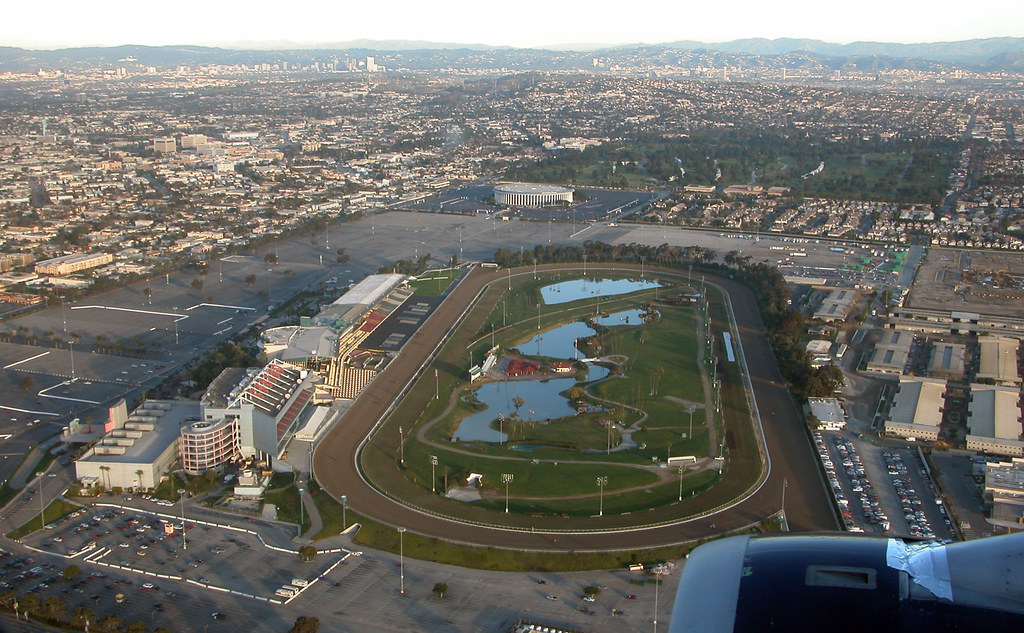

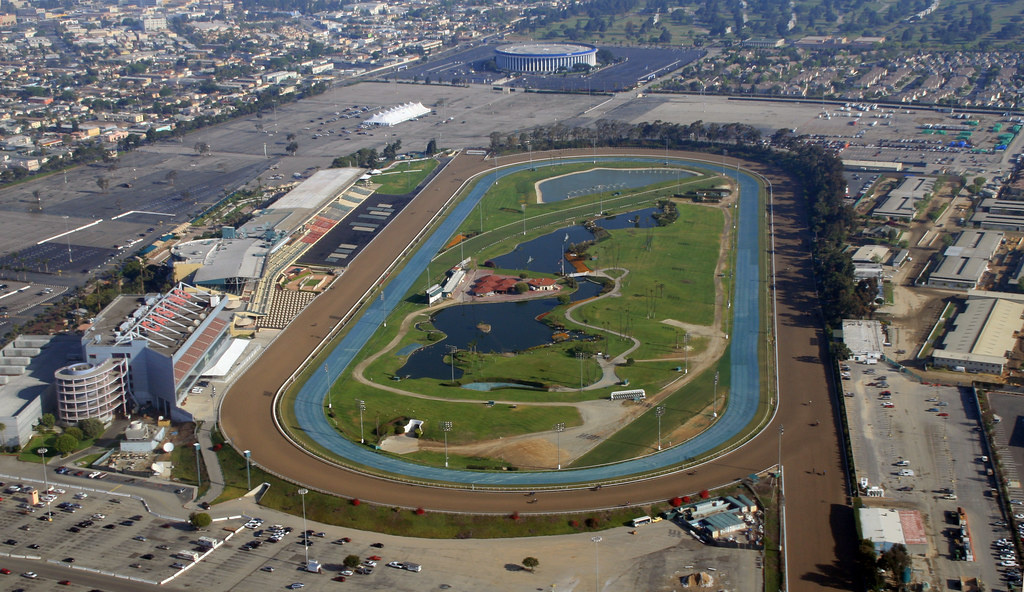



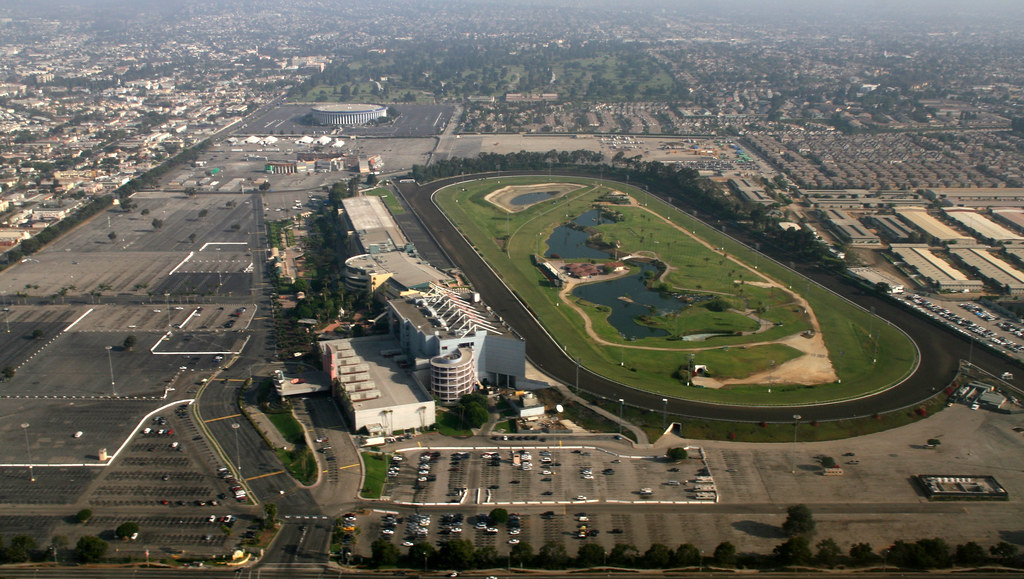
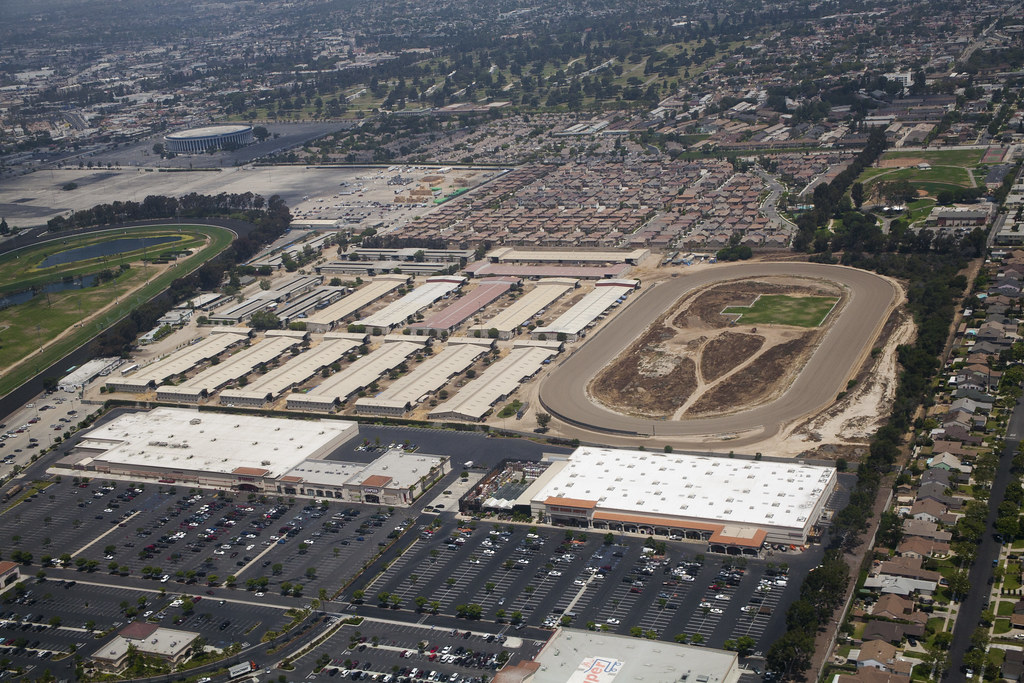


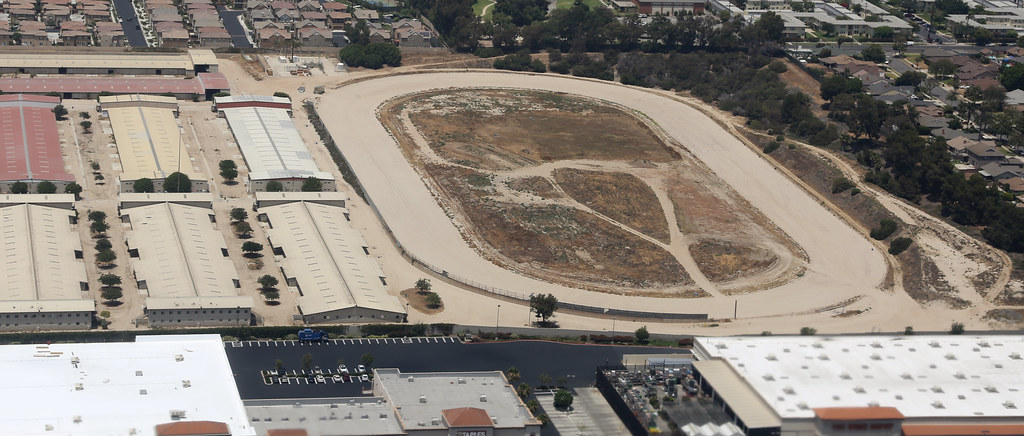
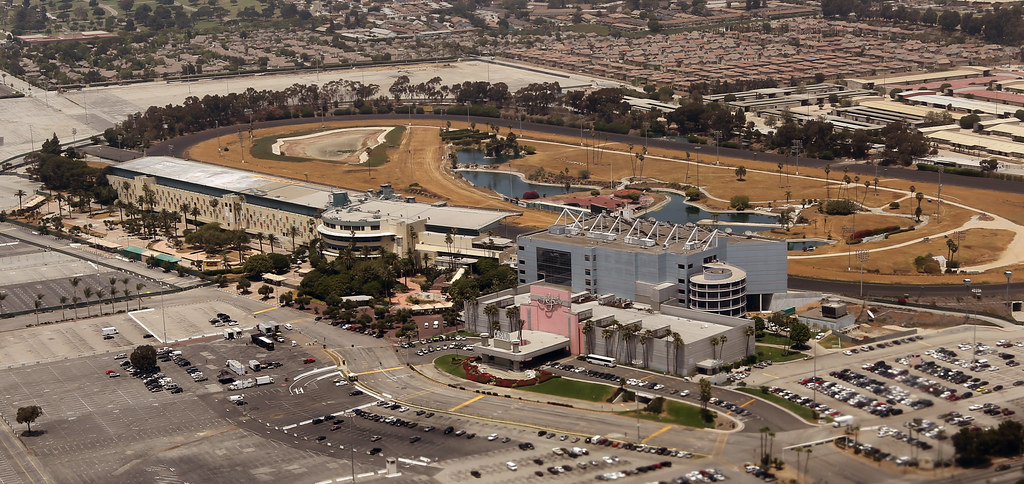






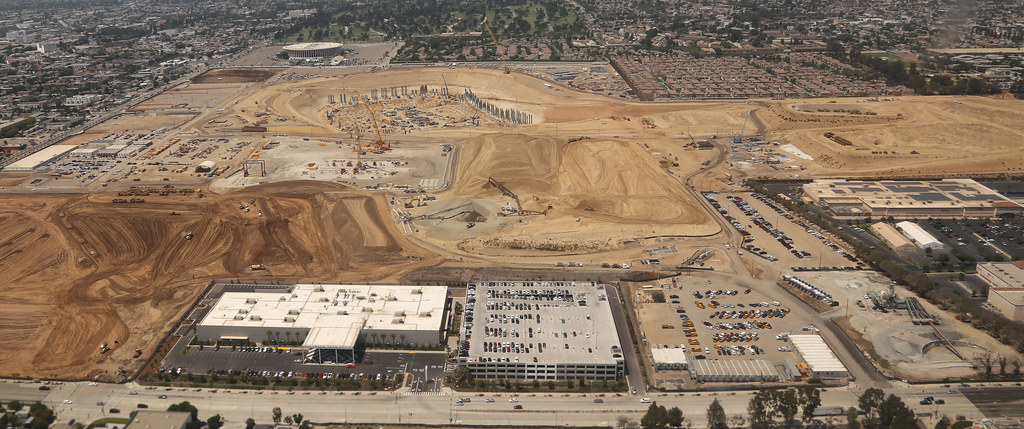




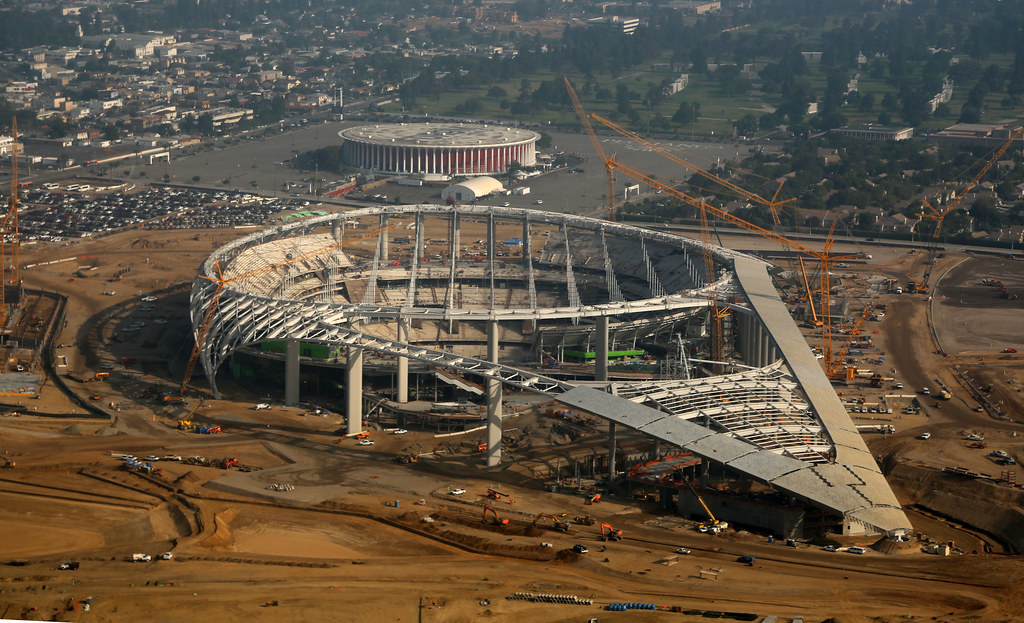

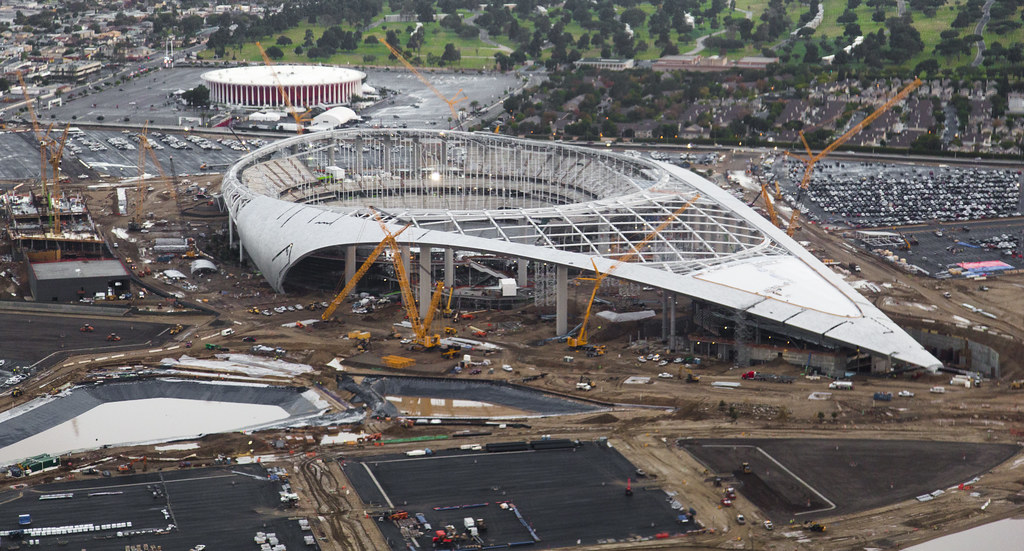

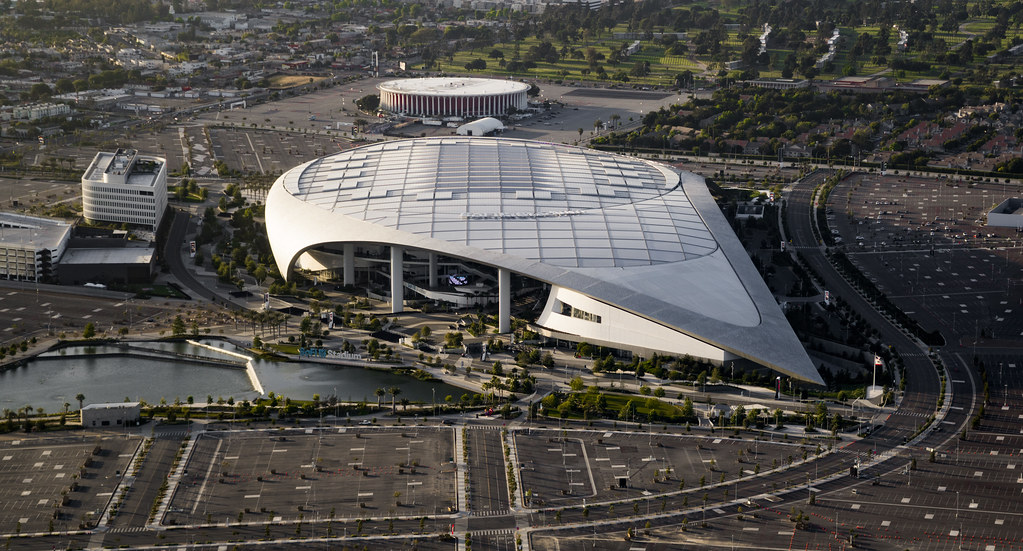
Leave a Reply